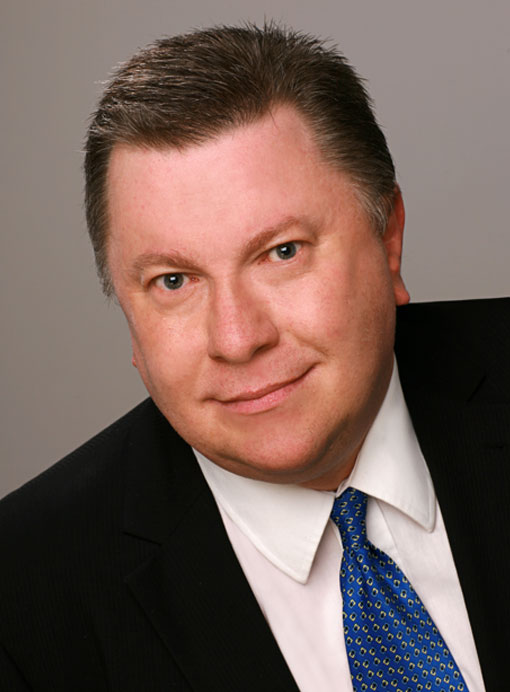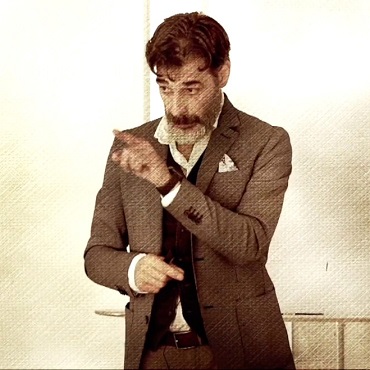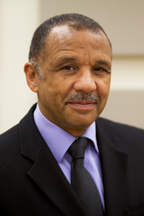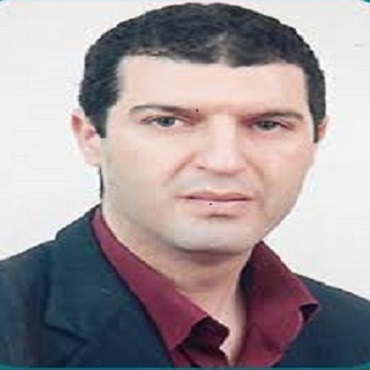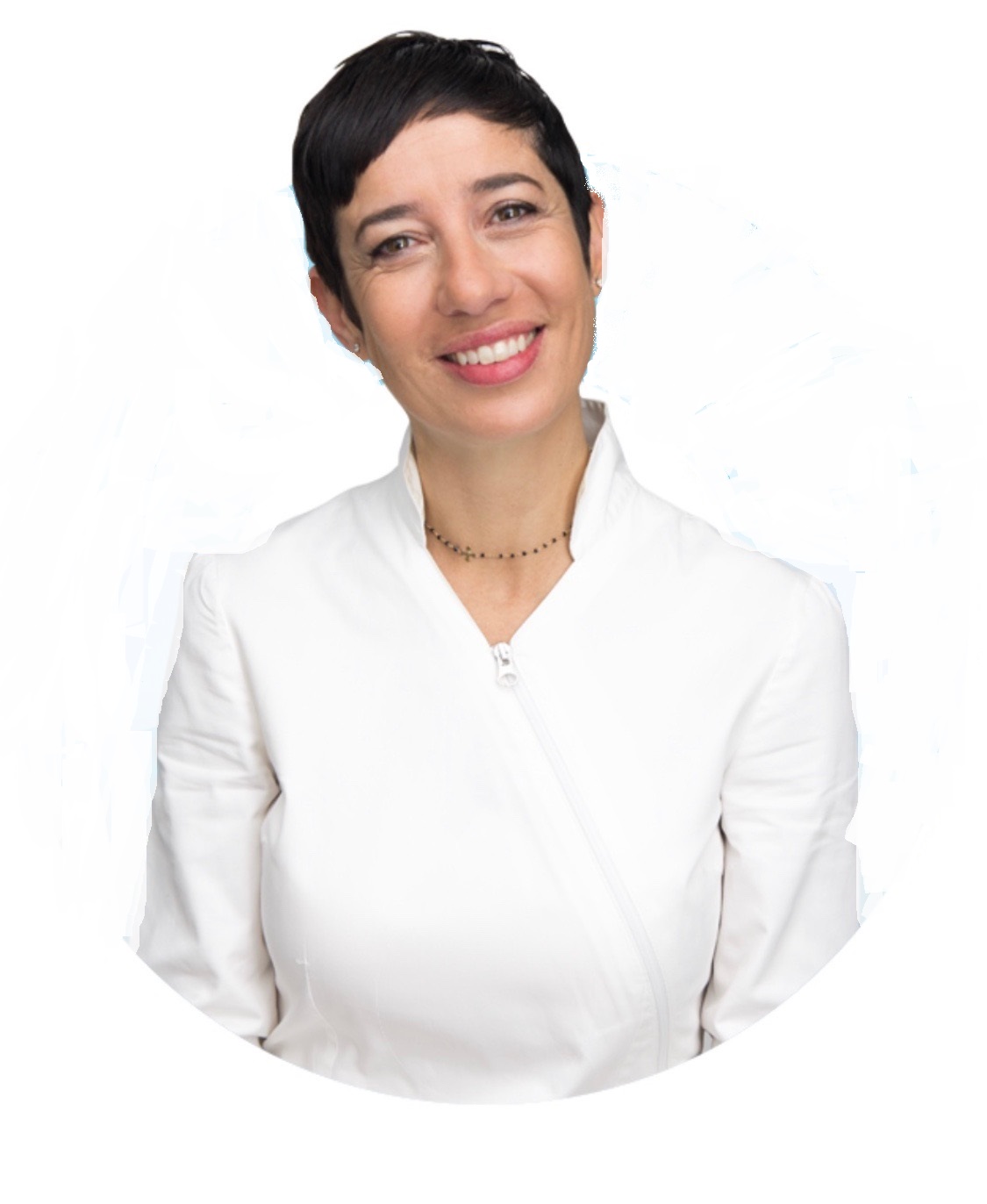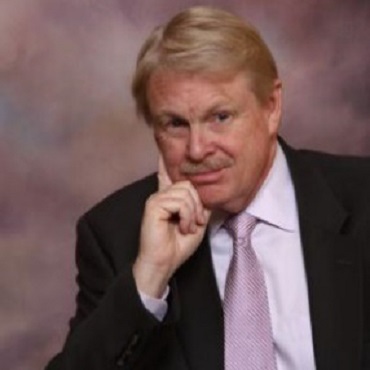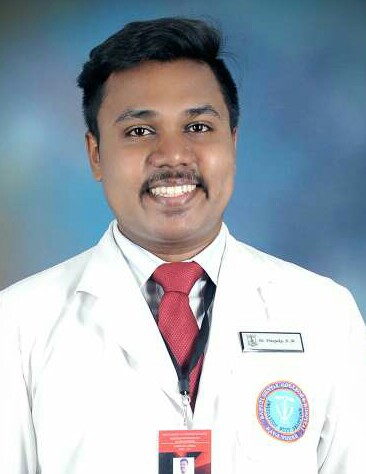Scientific Program
Keynote Session:
Title: Etiology and Clinical Management of Complications related to implant procedures
Biography:
Thomas G. Wiedemann, MD, PhD, DDS is Full-time Faculty and Assistant Director for Advanced Programs in Oral Surgery/RCSI at New York University, College of Dentistry, Department of Oral & Maxillofacial Surgery. Dr. Wiedemann´s career consists of more than 25 years of surgical and educational experience in an academic setting and successfully operating a private practice providing the full spectrum of Oral & Maxillofacial Surgery and Implant Dentistry. He has special interests in peri-implantitis and complications management and minimal invasive surgical techniques of the full scope of implantiology. He has acquired extensive expertise in implant surgery with multiple systems since 1995. He is well versed in innovative concepts of alveolar ridge augmentation, bone and tissue regeneration, CBCT guided- and piezo-surgery. He is a Fellow of the European Board of Oral & Maxillofacial Surgery (EBOMFS) and has Diplomate status in the International congress of oral implantologists (ICOI).
Abstract:
Although a high predictability and long-term success rate of dental implants is well documented in the literature, complications and failures do occur on a regular basis. The demand for implant therapy has fueled growth of the industry. Now many clinicians offer implants as a solution to partial and complete edentulism. The procedures are no longer limited to specialists. Problems with implants have been rising as more clinicians who do not have advanced training and skills are involved in implant placement and implant-related restorations. Some complications may be relatively minor and easy to correct, while others will be major and result in the loss of the implant, permanent damage of adjacent anatomical structures, such as trauma to the mental and inferior alveolar nerve, mandibular fractures, massive hemorrhage or can even be life-threatening, such as deep fascial abcesses, descending mediastinitis or cavernus sinus thrombosis. Considering the number of implants placed or projected to be placed in the United States alone, it would mean more than one million implants will require therapy for implant and bone graft related complication This lecture is based on numerous clinical examples and cases as a well as a literature review and gives an overview about implant failures, typical intra- and postoperative complications with even severe adverse outcomes causing medical emergencies related to implant and bone graft procedures with potentially life-threatening complication that require intubation or emergency tracheostomy.
Title: The importance of the role of the dentist today.
Biography:
Oscar Malaguti got his Degree in Dentistry and Dental Prosthetics University of Perugia with 110/110 cum laude. Degree in dental technician in Pesaro. Collaboration with Prof. T. Testori for maxillary sinus surgery and immediate loading in large rehabilitations. He holds courses in basic and advanced implant surgery and sedo-analgesia together with the Kristal Reserch group in Bucharest and in Italy. Masters in Sleep Dentistry at the University of Bologna.
Abstract:
The importance of the role of the dentist today is of great importance for the concepts that can be learned and obtained from the study of sleep and the knowledge of the patient's medical information. Today, the dentist spends a lot of time with the patient and is able through communication, motivation, encouragement, to improve the quality of life for a long time. The dentist's medical team must also think about the general health necessary for every patient to face life in the best possible way. Now in our work we are the coaches of our patients and we must be able to motivate, encourage, direct and assist their changes and see how our role gains importance in the patient's psychophysical health processes. The dentist's duty is to investigate and treat in addition to oral hygiene, nutrition, physical and mental health, encouraging the patient in this direction because it is and will be the direction of future health of people.
Title: Timely feedback about how we manage our health will reduce cost and improve quality in healthcare
Biography:
Fred Ferguson, Assistant Director Pediatric Dentistry, Interfaith Medical Center Brooklyn New York and Distinguished Teaching Professor – Emeritus, School of Dental Medicine, Stony Brook University and also Associate Professor, Department of Pediatric Medicine. He is a highly sought after speaker who has regularly presented to professional, consumer, and community groups. He has also consulted on healthcare with hospitals, organizations, and corporations. He is President/CEO and founder of Health Migration Consulting Inc. focused on improving the quality of care and reducing cost through building a process for consumer accountability, stakeholder collaboration, and PHR integration.
Abstract:
For Healthcare to reduce cost and improve value, consumers must become partners in their health. To achieve this goal, consumers could use technology to track the quality of their health management, corroborate this information with their dental examination results and receive personalized health guidance. This “Timely Feedback” would be continuously shared across Healthcare, enabling incentives for consumers and dentists, while improving primary care, collaboration and EMR integration. By the end of the course, participants will be able to: Identify the key role of Dentistry in Healthcare, Empower patients to become partners in Healthcare, Recognize the full spectrum of benefits of Timely Feedback
Oral Session 1:
- Oral Health |Laser Dentistry | Periodontics | Maxillofacial Radiology | Endodontics
Title: A controversial alternative to prevent alveolar bone resorption
Biography:
Cristina Navarro was born in Madrid, Spain. She received her doctorate of dental surgery in at San Pablo CEU, Madrid in June 2018 and later joined the Oral Surgery program at NYU. She is currently finishing her first year of residency and is involved in multiple studies conducted by the NYU Department of Oral and Maxillofacial Surgery. Cristina enjoys studying language and participated in a Medical English course in Oxford. In her free time, Cristina likes visiting her family and fine dining with friends.
Abstract:
Multiple reports indicate that the root submergence technique (RST) can be successfully applied in pontic site development with fixed implant supported restorations, especially in the maxillary esthetic zone, as an alternative to other socket preservation modalities. The aim of this study is to discuss the benefits and limitations of the RST on preserving the periodontal tissue at a pontic site of fixed implant-supported restorations.
Submerged roots can preserve bone and soft tissue so that the gingival contour of a pontic site is in harmony the adjacent abutment implants or teeth. Non-infected vital or endodontically treated roots reduced at the level of the bone crest or below the crest and completely submerged within the alveolus qualify and are able to effectively preserve the residual ridge even in implant-supported restorations. However, periapical lesions, external root resorption, gradual eruption and exposure and root caries are critical complications which may affect adjacent implants and limit this protocol in daily practice.
Several clinicians consider the RST as a potential treatment option in pontic site augmentation. However, the current data lack of higher level evidence for reliable and predictable long-term outcomes.
Only with high caution and in strictly selected single cases, the root submergence technique might serve as an alternative method of maintaining the alveolar ridge in fixed implant supported restorations.
Title: Direct adhesive restorations on anterior teeth : Stick or stratify
Biography:
Hafid El Bekkay, Dentist in the private sector since 1996. He got his baccalaureate in 1987 with honors . After, he did his dental studies at the faculty of dental medicine of Rabat , Morocco, and he got his doctorate in 1995 with honorable mention, the congratulations of the juries and proposal at the price of theses.
Abstract:
Thanks to progress in adhesive dentistry and the histological and biomimetic knowledge of dental tissues, we witness a paradigm shift in the choice of prior restoration which becomes less "Dogmatic", more rational .Indeed, biomimetics is the imitation or restoration of the biomechanics of the original tooth by the restoration.
The minimal therapeutic modalities which can precede a sophisticated treatment, since the vectors of the restorative dentistry reside in the maintenance of the pulp vitality....
This is of course the purpose of restorative dentistry. The appearance and development of adhesive techniques have paved the way for continuous improvement in terms of tissue economy and aesthetics. An excellent reason allows us to dive into the mechanism of action of adhesive systems. During in this conference we will discuss how to stick fracture fragments after dental trauma. In the absence of a fragment, we will show the key points to successfully stratify composites on anterior teeth
Title: The essential steps of infection control practices in a healthcare office setting
Biography:
Aileen Gunda is a medical device reprocessing expert, consultant, educator, and speaker, who is certified by the Canadian Standards Association (CSA). Aileen has 18 years of experience in the field of reprocessing medical devices from being a front-line staff, clinical educator and manager overseeing the full operation of the reprocessing department that manages the single-use and reusable medical devices used in the operating room and other health care office setting. She also has a baccalaureate degree in health administration major in health services management and a bachelor of science in medical technology. Pass the Philippine medical technology board examination.
Abstract:
Infection control practices are vital in the management of sterile and unsterile single-use and reusable medical devices. My experience working in the medical device reprocessing department at a hospital setting and participating in various infection control audit in clinics gave me the knowledge, and skills to identify the required infection control practices in a health care office setting. There are essential steps to achieve the highest probability of eliminating the microorganisms during the sterilization process. Learning the vital steps in the sterilization process improves efficiency and safety while reducing the risk of infection to staff and patient. In this study, I will identify the required methods in the proper handling and management of nonsterile and sterile single-use and reusable medical and surgical equipment. Furthermore, I will describe the process to prevent cross-contamination and the risk of staff and patient exposure to harmful bacteria. Finally, I will share the impact of not having and following the correct procedure of infection control.
Title: Let me share my digital orthodontic path
Biography:
Dr. Emanuela Pierotti graduated from the University of Perugia in 2002 with a degree in Dentistry and Dental Prosthetics. She obtained her specialization in Orthodontics at the University of Ferrara where she is currently a Visiting Professor.
Abstract:
What does digital orthodontics mean in my professional life? Today it means working in a very different way. It means treating my patients having the end in the mind and being able to see the end of the treatment in advance. Has it been immediately simple? Obviously not! It needed a long learning curve to change my approach. First of all, I needed to understand how to use an intraoral scanner in my daily practice and I understood that it improved my practice and my patients’ satisfaction. Then I needed to understand how to manage the digital setup. The digital setup for me means aligners (Invisalign) and fixed appliances (Insignia)
I have my protocol to send a case and to review the case, and this is what I’d like to share because I have understood that if we plan the case well, if we can review the case quickly,...it’s a done deal and the chairtime will be greatly reduced.
How to send an orthodontic case: When we send a case we need to remember that we will have to interface with the technicians, so our treatment plan has to be very clear, with precise information. We have to ask ourselves how we want to solve the case in the 3D dimensions: transversal plane, anteroposterior plane, vertical plane.
How to review the case: When we review the case we need to: check that the technicians have correctly done the things we asked for, check the movements’ staging, make the macrochanges, make the microchanges. If I plan a case with Invisalign, I usually change the attachments to improve the predictability. If I have to treat a complex case, I plan to also use miniscrews to manage the case.
Title: Inlays, onlays and overlays with resin composite
Biography:
Hafid El Bekkay, Dentist in the private sector since 1996. He got his baccalaureate in 1987 with honors . After, he did his dental studies at the faculty of dental medicine of Rabat , Morocco, and he got his doctorate in 1995 with honorable mention, the congratulations of the juries and proposal at the price of theses.
Abstract:
The first composites in indirect technique (Mörmann 1982, Touati 1983), made using microfilled resins, were not a great success because of their mediocre properties. On the other hand, in view of the good results obtained with the feldspar ceramics used for the facets, these were introduced for later inlays-onlays posterior.However, the number of fractures of the restorations initiated a return of the practitioners towards the composite in view of the constant evolutions of the material with time.
Composites have evolved a lot in the last decades (from micro-filled composite to nanohybrid), not only in terms of mechanical properties (decrease of polymerization stress ...) but also in their ease of work (choice of color, injectable materials, polishing ...). In addition, the realization of the contact point is much easier with the current material available (metal matrices fine and pregalbées, spacer ring ...). Therefore, nowadays, one can expect a longevity of at least 10 years for a direct composite inserted in a small cavity.
Title: Ubiquitous Xerostomia: Definitions, causes, cases and treatment options
Biography:
James L. Ratcliff is Chairman of the Board and CEO of Rowpar Pharmaceuticals, Inc., Scottsdale, AZ, maker of the ClÅSYS brands of oral care products. In 2017 and 2018, Rowpar was cited by Corporate Livewire as innovative leader in oral care for North America. In 2014, Rowpar received the U.S. Small Business Administration’s Exporter of the Year Award. From 1989 to 2000, He served as senior research scientist, professor and director, Center for the Study of Higher Education at the Pennsylvania State University. From 1979 to 1989, He was professor and program head for higher education at Iowa State University. He is author of 120 articles, books, book chapters, is co-inventor on over 40 patents and patents pending. He is active member of the Arizona Biotechnology Assn., American Academy of Oral and Systemic Health, American Education Research Assn., and the International Association for Dental Research. He holds a Ph.D. in Higher Education from Washington State University, a M.A. in History from Washington State University, and a B.A. from Utah State University.
Abstract:
Xerostomia is ubiquitous. Also, it is defined in a variety of ways. No standard treatment guidelines exist. And there is not apparent cure on the horizon. In this session, several treatment options are reviewed including lifestyle modifications to medications. Drugs, such as pilocarpine and cevimeline provide relief but often come with untoward side effects. Over-the -counter remedies vary in their results, including saliva substitutes and oral lubricants, select toothpastes, alcohol-free mouth rinses, gels and oral sprays, all providing variable results. Because xerostomia is ubiquitous in its manifestations, clinical studies are difficult and necessarily limited in scope.
Clinically, professional and home oral hygiene are key to alleviating discomfort and avoiding complications of xerostomia. Effective treatment options should be viewed as a partnership involving the dental professionals and the patient. Dentists are hygienists are important resources to the patient, providing accurate information about the nature and extent of the condition as well as the treatments available. and instruction regarding home care.
The presentation concludes with a consideration of desired design features for oral care products intended for use with xerostomia conditions. Case studies of patients using CloSYS oral care products show how dental professionals can assist xerostomia patients’ lives by introducing them to safe, effective products that restore comfort and confidence. According to one of these patients, “Dry mouth is the killer of your teeth and your social life. I thank my dentist every time I see her.” Effective, caring, informative treatment can help patients with dry mouth to become parched no more.
Title: Good Periodontal Health Equals to Good General Health
Biography:
Vinayaka Dravida completed his B.D.S, I M.D.S, and persuing DNHE from The University of Pennsylvania, and participated in many conferences.
Abstract:
Like many areas of the body, your mouth is teeming with bacteria — most of them harmless. Normally the body's natural defences and good oral health care, such as daily brushing and flossing, can keep these bacteria under control. However, without proper oral hygiene, bacteria can reach levels that might lead to oral infections, such as tooth decay and gum disease.
In addition, certain medications — such as decongestants, antihistamines, painkillers, diuretics and antidepressants — can reduce saliva flow. Saliva washes away food and neutralizes acids produced by bacteria in the mouth, helping to protect you from microbial invasion or overgrowth that might lead to disease.
Studies also suggest that oral bacteria and the inflammation associated with periodontitis — a severe form of gum disease — might play a role in some diseases. In addition, certain diseases, such as diabetes and HIV/AIDS, can lower the body's resistance to infection, making oral health problems more severe.
Keynote Session:
Title: Bioengineered liver as an intracorporeal assist device
Biography:
Zurab Kakabadze is a Head of Department of Clinical Anatomy at the Tbilisi State Medical University. He is also a President of International Society of Regenerative Medicine & Biomedical Innovation. His research has received extramural funding with publication of results in prestigious international journals.
Abstract:
We report a new method of creating bioengineered liver as an intracorporeal assist device from the combination of decellularized cow placentome and liver tissue microfragments. For the decellularization of cow placentome sodium dodecyl sulfate and 1% triton X-100 were used. After decellularization, three-dimensional scaffolds were filled with autologous liver microfragments. As the study objects, 30 rats were used. Prior to transplantation of liver assist device, all animals were subjected to 75% hepatectomy. The inclusion of liver assist device in porto-carval blood flow using microsurgical techniqes was performed. The maximum observation period for animals were three months. The transplantation of liver assit device containing autologous tissue rescured rats in extended partial hepatectomy-induced acute liver failure. This rescue concerned amelioration of injury and induction of regeneration in native liver. Transplanted liver micro fragments in the 3-D scaffold of cow placenotme formed the homogeneous tissue, which visually does not differ from the normal liver parechyma. Cellular composition of the transplanted liver fragments did not have signs of disorganization, steatosis or bile accumulation. A 3-D scaffold of the cow placentome containing vascular pedicle and rich vascular network has many characteristics that are desirable for a biomaterial and it can be successfully used as a matrix for creation of bio-engineered liver or assist device.
Title: A clinical trial report of autologous bone marrow stem cell transplantation in patients with spinal cord injury
Biography:
Konstantine Chutkerashvili is a neurosurgeon at Innova Medical Center, Head of scientific direction at Georgian Young Neurosurgeons Association and Director Anatomical research and skills are the Center at Tbilisi State Medical University.
Abstract:
Spinal cord injury is a severe and a very common neurological condition. Stem cell transplantation has emerged as a viable cell therapy option with great potential for restoring neurological function lost following spinal cord injury. A total of 18 patients, with complete motor deficits and paraplegia caused by thoracic and lumbar spine trauma without muscle atrophy or psychiatric problems, were included into this study. The patients have undergone the treatment at the Innova Medical Clinic, Georgia. All patients have completed and signed informed consent prior to autologous bone marrow-derived mesenchymal stem cell transplantation. The bone marrow was aspirated from the anterior iliac crest under local anesthesia and the mononuclear fraction was isolated by density gradient method. At least 750 million mononuclear-enriched cells, suspended in 2 mL of saline, were infused intrathecally. Analysis of subsequent treatment results indicated significant improvements in sensory, motor and autonomic nerve function as assessed by the American Spinal Injury Association's impairment scale. However, despite achieving the positive preliminary results, for the successful application of the bone marrow stem cells in the clinical practice, it is necessary to perform more detailed examinations to evaluate the long-term outcomes of bone marrow stem cells in the patients with spinal cord injury.
Title: Autologous bone marrow derived cells in the treatment of liver disease patients
Biography:
David Chakhunashvili is an Assistant Professor at Tbilisi State Medical University and specialist at National Center for Disease Control & Public Health, Georgia. He has his expertise in innovative research studies and devotion in improving the health for the patients throughout the world.
Abstract:
One of the most challenging problems in hepatology is the treatment of patients with decompensated liver cirrhosis. In this study, we present data of phase I clinical trial in 34 patients with advanced decompensated liver cirrhosis, caused by chronic viral hepatitis C, and were treated with bone marrow cells (BMCs). All patients signed a written informed consent. For treatment, 100 mL of bone marrow was aspirated from the anterior iliac crest and mononuclear cells were isolated by Ficoll Paque Plus or Ficoll Paque Premium solution. At least 2.5x106 of mononuclear-enriched BMCs were infused into the hepatic artery of the patients through endovascular catheter, using the routine technique similar to arterial chemoembolization of liver tumors. All procedures were performed without any specific side effects or complications except for mild pain in the anterior iliac crest region and mild pain at the sites of bone marrow puncture. By the end of follow-up, the liver function tests of all patients have been improved. The follow-up visits were scheduled for 12 months after transplantation. The transplantation of BMCs in the patients with decompensated liver cirrhosis is promising, because it can improve the condition of the patients and become a bridge to the liver transplantation.
Oral Session 1:
- General Surgery | Robotic Surgery | Pediatric Surgery

Chair
Zurab Kakabadze
Tibilsi State Medical University, Georgia

Co-Chair
David Chakhunashvili
Tbilisi State Medical University, Georgia
Title: Use of acellular human amniotic membrane to repair large pharyngocutaneous fistulae developing after radiotherapy and total laryngectomy
Biography:
Lika Karalashvili is a dentist and a scientist at Department of Clinical Anatomy at Tbilisi State Medical University whose research field is the application of bioengineering methods in dentistry.
Abstract:
The purpose of this study was to evaluate the outcomes of surgery involving the use of decellularized human amniotic membrane to repair large pharyngocutaneous fistulae developing after radiotherapy and total laryngectomy. A total of 67 patients with laryngeal squamous cell carcinoma were retrospectively analyzed after treatment in a prospective trial. After preoperative chemotherapy, radiotherapy, and total or extended laryngectomy, primary wound healing occurred in 42 (62.7%) patients. Pharyngocutaneous fistula has been developed in 8 (11.9%) patients. Human amniotic membrane grafts that were obtained through the decellularization method were used to repair the fistulas. The average time for full healing of the wound in all patients after transplantation of these grafts was 14-18 days. After 3 months of follow-up, none of the patients had fistula recurrence or stricture development. The human amniotic graft is very reliable and is well-suited for repairing pharyngocutaneous fistula.
Title: Total gastrectomy with pancreatosplenectomy and D3 lymph node dissection for advanced gastric cancer invading adjacent organs
Biography:
Merab Janelidze is a general surgeon at the Western Regional Center for Modern Medical Technologies, Georgian National University. His main interest is the abdominal surgical oncology and organ transplantation.
Abstract:
We report 3 cases of emergency total gastrectomy associated with bleeding and hemorrhagic shock which was caused by gastric adenocarcinoma. A 55 year old woman and two men aged 57 and 61 respectively were admitted to our hospital because of massive hematemesis. There was a stomach cancer invasion in the spleen and the pancreas body in all three cases. The following emergency surgery was performed: total gastrectomy, esophagoenterostomy, pancreatico-jejunal anastomosis with invaginating method that was developed by us, hepaticoenterostomy, D3 lymph node dissection and Braun enteroenterostomy. Postoperative adjuvant chemotherapy is usually prescribed to improve the survival of patients. The follow-up period was two years. Survival benefit of surgery in advanced gastric cancer is still unclear. Subsequently, total gastrectomy with pancreatosplenectomy and D3 lymph node dissection remains the only curative therapy for patients with bleeding and hemorrhagic shock developed after gastric cancer with adjacent organs invasion.
Title: Scarrless tummy tuck ( A personal technique
Biography:
Nourredine Gharib has 20 years of experience in surgery and developing new techniques to improve patients’ healthcare. He specializes in plastic and reconstructive surgery.
Abstract:
This is a new technique that we are developing in our department of plastic reconstructive and aesthetic surgery UH IBN SINA RABAT as an alternative to conventional abdominoplasty techniques. In fact, we combine a liposuction by VASER with a diastasis cure with an endoscopy approach to reproduce a scarless abdominoplasty. We received a patient who complains after her pregnancy of a weakness sensation of her abdominal wall associated to a moderate umbilical skin excess. The classic indication in these patients is a abdominoplasty without transposition of the umbilicus. Eager for a procedure without scars, she was the perfect candidate for our technique.

